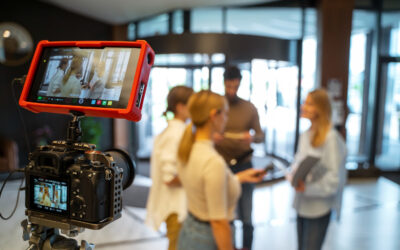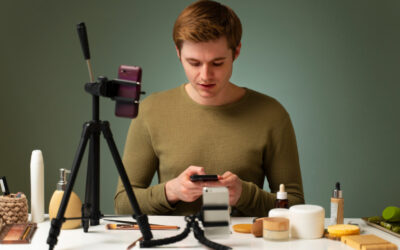Introduction
Café-themed commercials require intimate ambiance, nuanced lighting, and textural warmth to deliver emotional connection and brand recall. Traditional on-location shoots often face challenges such as unpredictable weather, background distractions, and extensive logistical planning. This case study explores how a cozy café ad was designed and executed entirely within a virtual studio for advertising, using LED walls and real-time camera sync to produce visually rich, final-quality footage within a controlled studio environment.
Objective
The objective was to create a detailed and atmospheric café commercial that emphasized elements such as steam, wood textures, warm lighting, and product interaction. The team chose a virtual studio for advertising as the primary workflow, aiming for complete control over ambiance, fast iteration cycles, and streamlined post-production without sacrificing realism.
Challenges
Capturing a café environment authentically requires subtle light gradients, natural shadows, and environmental details like reflections and steam diffusion. On-location shoots come with risks of noise, inconsistent daylight, and spatial limitations. Green screen techniques often struggle to deliver the realism needed for intimate indoor sets. To solve these challenges, the team transitioned to a full-scale production inside a virtual studio for advertising, which offered the freedom to simulate light behavior and scenery with precision.
Execution Process
1. Pre-Visualization
The production began with digital storyboarding and 3D pre-visualization inside Unreal Engine. Using this approach, the creative team mapped out the café’s layout, steam movements, character interactions, and camera paths. This early planning phase gave every department—from set designers to the DOP—a unified vision aligned with the capabilities of a virtual studio for advertising.
2. Asset Creation
A high-fidelity virtual café scene was built with 3D models showcasing rich wooden surfaces, glowing pendant lights, realistic window lighting, and dynamic steam. These assets were optimized for LED wall playback and designed to deliver both scenic visuals and interactive lighting, critical for in-camera realism.
3. LED Volume & Tech Integration
LED panels were arranged in an L-shaped configuration to simulate the café’s back wall and side windows. A ceiling-mounted lighting grid was programmed to sync with virtual sunlight using DMX control. Cameras were equipped with motion-tracking technology to sync real-world camera movements with the 3D environment. This configuration ensured correct parallax and depth within the virtual studio for advertising.
4. Virtual Scouting
Using VR headsets and high-resolution monitors, the director and cinematographer explored the virtual café before shooting. They made real-time adjustments to the lighting warmth, shadow placement, and steam behavior—customizing each frame to match the intended mood. This virtual walkthrough approach saved hours of physical testing and allowed rapid iteration.
5. In-Camera VFX Shooting
Actors performed in front of the LED wall, interacting with coffee cups, cutlery, and each other. The virtual café backdrop projected natural light and reflections onto the actors and props. Shadows from the virtual window grilles fell in real time across the physical surfaces. Because the environment was rendered and captured live, the output had the cinematic polish of location footage—without the unpredictability. This is a hallmark benefit of operating within a virtual studio for advertising.
6. Post-Production
With the majority of visuals finalized in-camera, the post-production process was limited to light color correction and sequencing. No chroma keying or extensive VFX layering was required. This drastically cut down the delivery timeline and made room for easier regional adaptations and promotional edits.
Conclusion
This café ad exemplifies the advantages of using a virtual studio for advertising. By blending LED wall technology with real-time rendering and creative flexibility, the production team recreated a cozy, detail-rich café scene inside a controlled, efficient environment. The approach delivered high-quality visuals, reduced post-processing, and empowered real-time decision-making—all while maintaining cinematic standards.
Key Takeaways
- A virtual studio for advertising ensures total control over lighting and ambiance
- LED environments simulate natural reflections and soft background detail
- Real-time scouting and on-set previews streamline creative collaboration
- In-camera capture eliminates the need for green screens
- Faster turnaround and high visual quality are achievable without complex logistics
- Perfect for repeatable, high-style ad formats like café, product, or lifestyle branding



